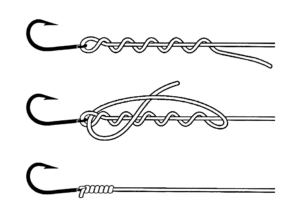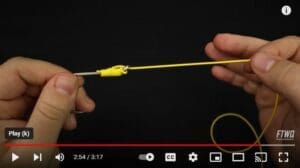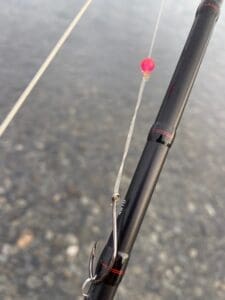Knots can be an intimidating part of fishing, and so many new anglers assume that you need to know dozens of different knots in order to be successful, but the reality is that there are only a few knots that you really need to know. The more important thing to know is WHEN to use what knot, and sockeye fishing is no exception.
In this third part of the sockeye fishing series you’ll learn what knots you’ll need to know, and when to use them. We hope you learn something!
PART III – KNOTS
Palomar Knot – This knot is my go-to knot any time I’m able to use it. It’s strong and easy to tie, which is just about everything you can look for in a fishing knot! The only limitation of the Palomar knot is that you have to have a free end, so you can’t use it on quite every part of your system, but I highly encourage you to use it a lot!
Improved Clinch Knot – This knot is sometimes referred to as the “fisherman’s knot,” probably because it’s possibly the most utilized knot by fishermen all over the world. As a rule of thumb you’re going to want to make more wraps when using lighter line, and less wraps when using heavier line. The improved clinch knot isn’t quite as strong as the Palmomar knot, but it doesn’t require a free end to tie, so it can be used anywhere in your system you need to connect monofilament or fluorocarbon line to terminal tackle (i.e. hooks, swivels, etc.)
Egg-Loop/Snell – The egg loop has 2 major benefits: It’s the strongest knot you can use to tie on a hook, and it keeps the hook in-line with the leader at all times. While other knots can pivot on the eye of the hook, creating awkward angles, the egg loop exits the hook along the shank and out the eye, keeping it lined up perfectly throughout every drift. This is a major advantage when sockeye fishing and attempting to “floss” a fish as the hook travels through the current. The downside of the egg loop is that it’s complicated to tie (hence the video) and that it requires a free end of line (making for a more difficult hook swap out). Click the video below to learn how to tie the egg loop.
Double Surgeon Loop Knot – I’ve been using this knot for various reasons over the years, but only in the last several years did I begin applying it to my sockeye fishing, specifically to secure my hook to the end of my leader. The beauty of the double surgeon knot is that it’s ridiculously simple, and most importantly it makes changing out your hook a cinch! No cutting or retying is involved at all – just loosen the knot, remove your current/dull hook, and add a new one… voila!
Nail-less Nail Knot – This is the knot I often use to attach my leader to my fly line. It’s not the only way to do it, but it allows the knot to slide freely through your guides, and it holds okay if done correctly. It’s strength is that no tool is needed to tie this knot, but the downside is that it’s likely to be the first knot in your system to fail. Be sure to spend a little extra time on this knot to make sure it’s clean & secure, and trim the tag ends very close so that it slides through your guides as designed.
These are all the knots you’ll need to know in order to be an advanced sockeye angler. In all reality, you can be very successful if you are good at just one or two of them…
The winter-time (now) is the perfect time to practice all these knots so that you’re ready when the sockeye salmon show up by the thousands in June… Stay tuned for the next part of this sockeye fishing series where we’ll discuss the different options you can use to rig weight at the top of your leader!
www.akfishology.com








0 Comments